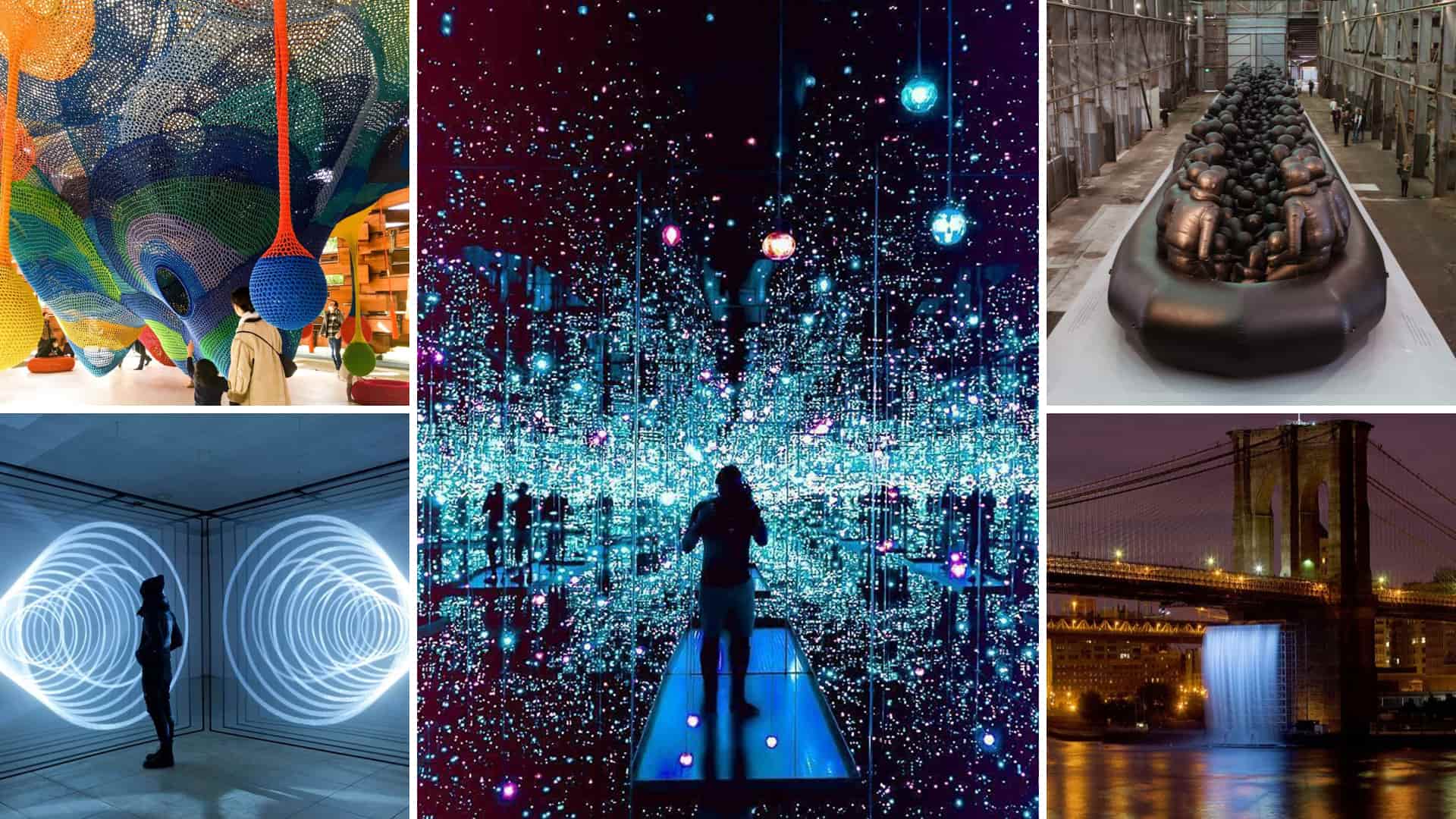One of the more popular types of galleries major cities are seeing in the modern day is that of installation art. Viewers and participants enter these galleries and experience installations in which the art surrounds them nearly on all sides. In fact, some classic works of iconic artists are even being adapted into installations. So, what is installation art and what makes it unique from other mediums? In this article, we’ll take a look at the installation art definition and some iconic installation artworks to understand its place in the art world.
What is Installation Art
First, let’s define installation art
Meaningful installation art can range in scale, concept, and even material. Despite these differences piece to piece, it's important to understand the installation art definition.
INSTALLATION ART DEFINITION
What is Installation Art?
Installation art is a visual artwork that can be constructed from a variety of materials and can be created in a variety of locations. Installation art aims to change a viewers perception of the space and environment in which it is in. This art differs from other three-dimensional art mediums because it utilizes the changing perspective of the viewer as they move. Viewers are able to become involved and even participate within the piece, whereas a sculpture is made to be viewed from the outside.
Famous Installation Artists:
- Yayoi Kusama
- Olafur Eliasson
- Damien Hirst
- Ai Weiwei
This article is part of our ongoing series on Art Styles. You can also refer to our Art History Timeline post to help place this movement in context.
What is Installation Art History?
History of Installation Artworks
The history of this movement can be traced back to various artists and art styles. Most notably, the roots of installation art can be seen in conceptual art.
Conceptual art has its own history tracing back to Marcel DuChamp around 1913 into the 1950s and '60s. To better understand this movement's context, take a look at the video below breaking down the case of conceptual art.
The Case for Conceptual Art • installation artists history
Artist Sol LeWitt, as noted in the video above summarizes the art form eloquently. “In conceptual art the idea or concept is the most important aspect of the work… The idea becomes the machine that makes the art.”
This principle that "the idea" is the driving force behind a work of art is also found throughout installation art. Whether the idea is specific and distinct or an exercise that requires participation, it is the idea of experience that drives an installation piece.
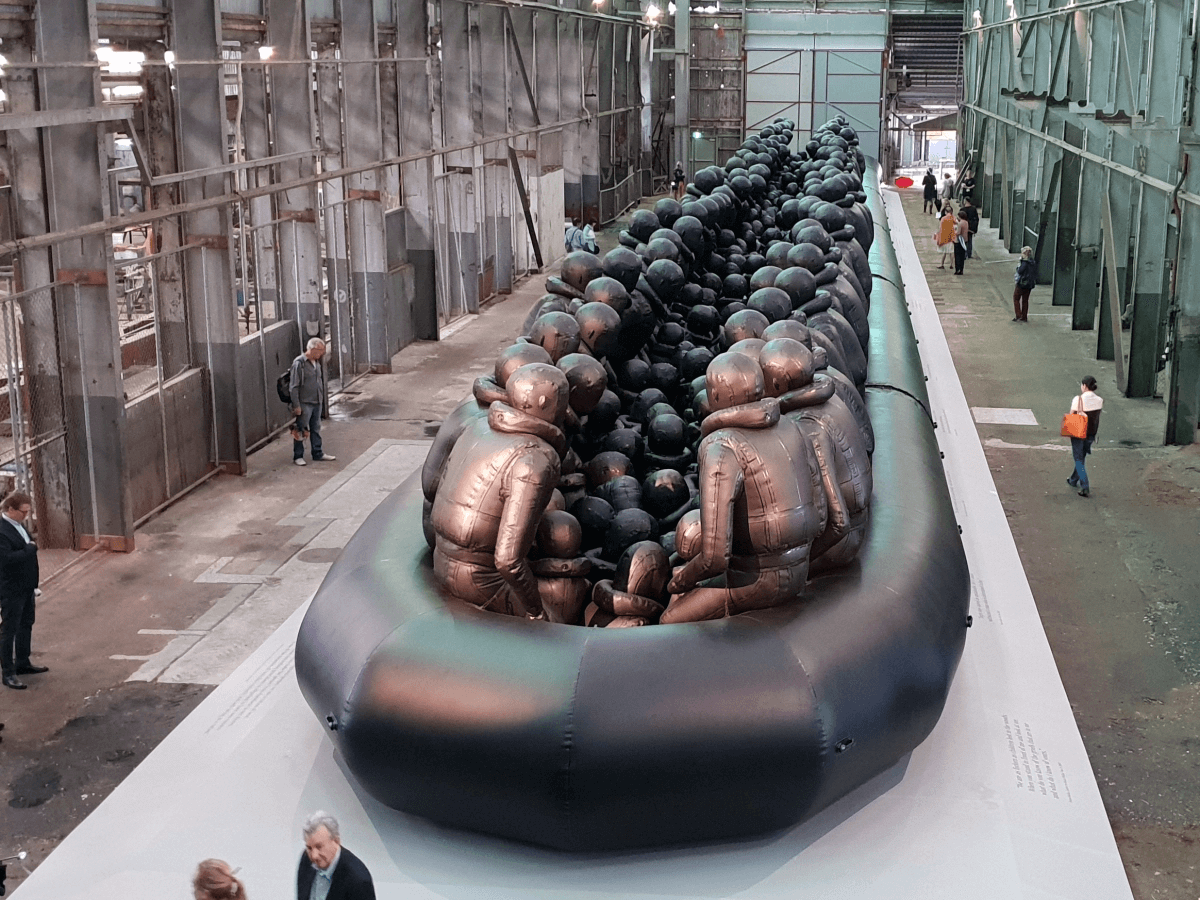
Law of Journey by Ai Weiwei • Installation Art examples
In 1958, the term “environment” was used by artist Allan Kaprow to describe his work in which a room and viewer participation were required within the piece. While installation art is not unique in its focus on ideas and concepts like conceptual art, it distinguishes itself in the way it engages a viewer.
FAMOUS INSTALLATION ART
What makes installation art unique
Installation art distinguishes itself from other mediums such as film, paintings, and sculpture by how it involves the viewer. Artist Olafur Eliasson brilliantly makes this point by calling the viewer of an installation piece the “Protagonist.” The work of art depends on a viewer’s participation. One of the best examples of this is Eliasson’s work “Beauty” (1993).
Eliasson created a rainbow from a mist of water and light. However, the rainbow also depended on the angle of the eye of the viewer. The rainbow was totally dependent on the viewer and where they were in the room.
“Beauty” by Olafur Eliasson • Installation Art examples
Installation art has is one of the most experiential art mediums that requires active participation from a viewer to attempt to understand a work. Eliasson goes as far as to call a viewer of his work a “participant.”
All of this type of art takes into account how a viewer will experience the art through constants of space and time. These factors are what define differing types of art installations.Related Posts
Famous Installation Art
Iconic art installations
This art is a medium that can make a lasting impression on a viewer or participant. A concept, story, or simply a feeling can linger in the mind of a viewer long after leaving the installation. To understand this, let’s take a look at some iconic art installations that have led to conversations about the concepts to this day.
The New York City’s Waterfalls by Olafur Eliasson (2008)
Olafur Eliasson’s The New York City’s Waterfalls (2008) is one of the most iconic mobile installations. Installation art that is meant to be showcased in various geographical locations will be made to be disassembled and reassembled. This makes it “mobile.”
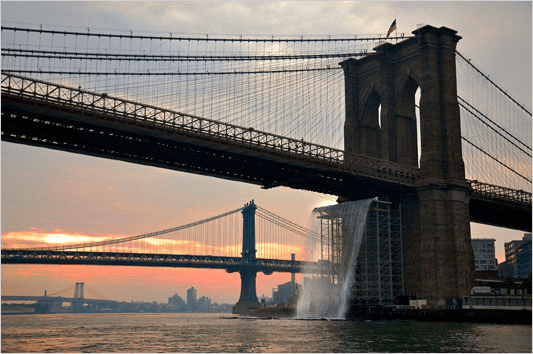
Waterfall Installation by Olafur Eliasson • Contemporary Art Installation
Artists take mobile installations city to city or even country to country. In this video, Eliasson explains how the movement of water across space presents scale.
For this reason, he utilized the same sized waterfall in various spaces in New York to give scale to New York’s most iconic spaces.
Olafur Eliasson by Waterfall Installation • Famous installation artworks
Yard by Allan Kaprow (1961)
Yard by Allan Kaprow is arguably one of the trailblazing installation pieces that marked a new era of art. Kaprow filled the exterior yard of New York’s Martha Jackson Gallery with black rubber tires. Participants were encouraged to play, run, jump, and frolic across the tires.
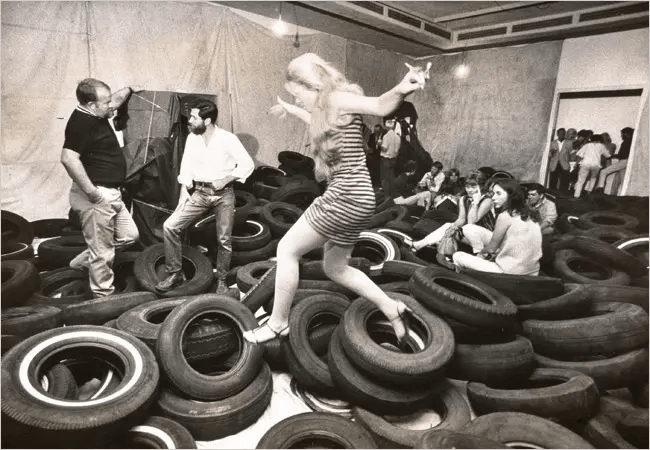
Allan Kaprow • Yard
Yard was a manifestation of Kaprow’s approach to his work which aimed closer toward reality and ordinary life than anything else. Kaprow put it best saying, “Life is much more interesting than art. The line between art and life should be kept as fluid, and perhaps indistinct, as possible.”
Infinity Mirrored Room – The Souls of Millions of Light Years Away by Yayoi Kusama (2013)
Out of all of Yayoi Kusama’s works, she is perhaps most notably known for the creation of ‘Infinity Rooms.’ In these installations, Kusama lines the walls, ceilings and floors with mirrors. She then fills them with various types of lights, colors, and refractive materials such as chandeliers and glass. This in combination with the mirrors give the participants a sensation of infinity.
Kusama has created various ‘Infinity Rooms’ that have been exhibited around the world. Below is The Souls of Millions of Light Years Away, an installation that conjures up the experience of drifting off into the vast, infinite universe.
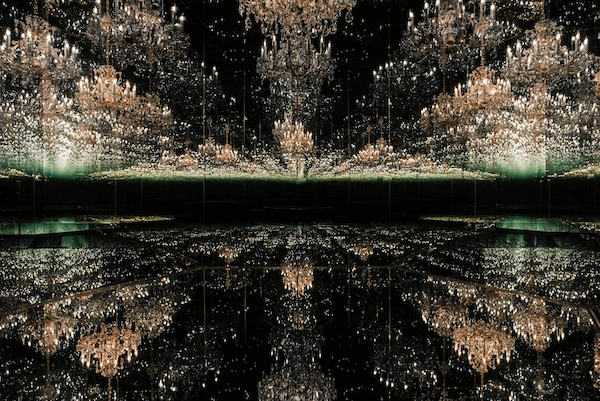
Infinity Mirrored Room • The Souls of Millions of Light Years Away by Yayoi Kusama (2013)
As you can see from these examples, installation art has the unique ability to provide a physical manifestation of concept while simultaneously affecting a participant emotionally and sensationally. Its lack of any true restrictions has led to some of the most iconic and creative works of art in history.
UP NEXT
Explore More Styles and Movements
This was just one of many fascinating segments of art history. There are many eras, styles, artists, and movements to discover. Let's continue our study by choosing the next stop on your way to becoming an art aficionado. Below you can visit our Art Styles Index, our Art History Timeline, or choose an individual movement.
Showcase your vision with elegant shot lists and storyboards.
Create robust and customizable shot lists. Upload images to make storyboards and slideshows.
